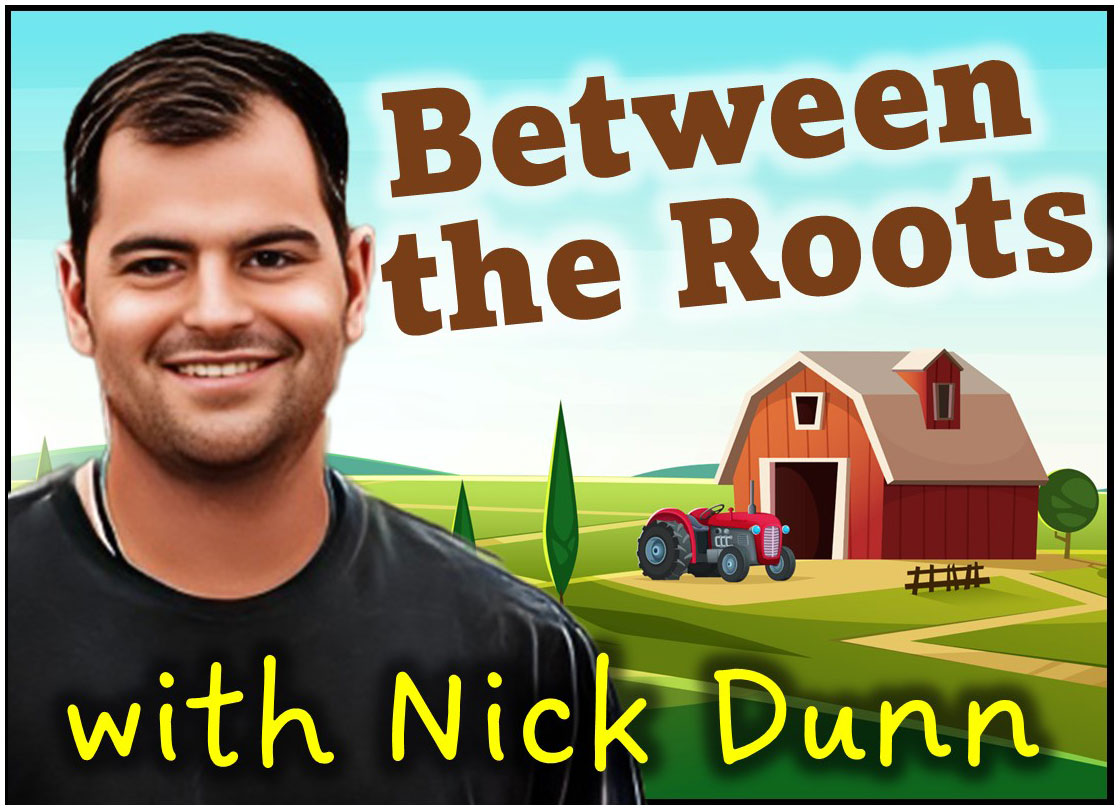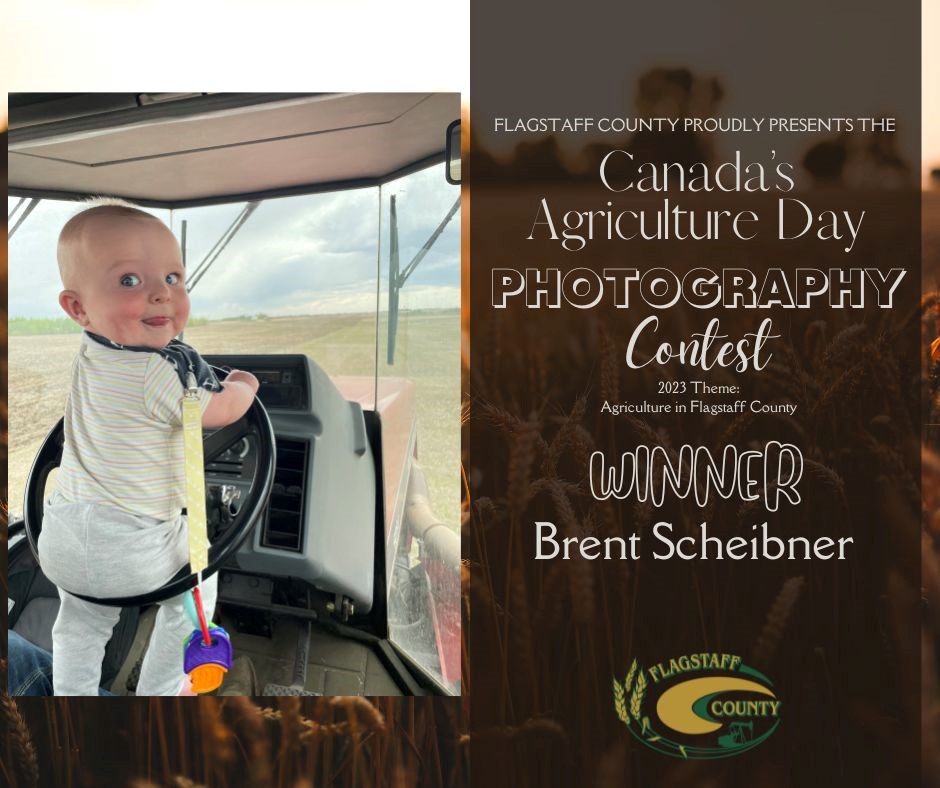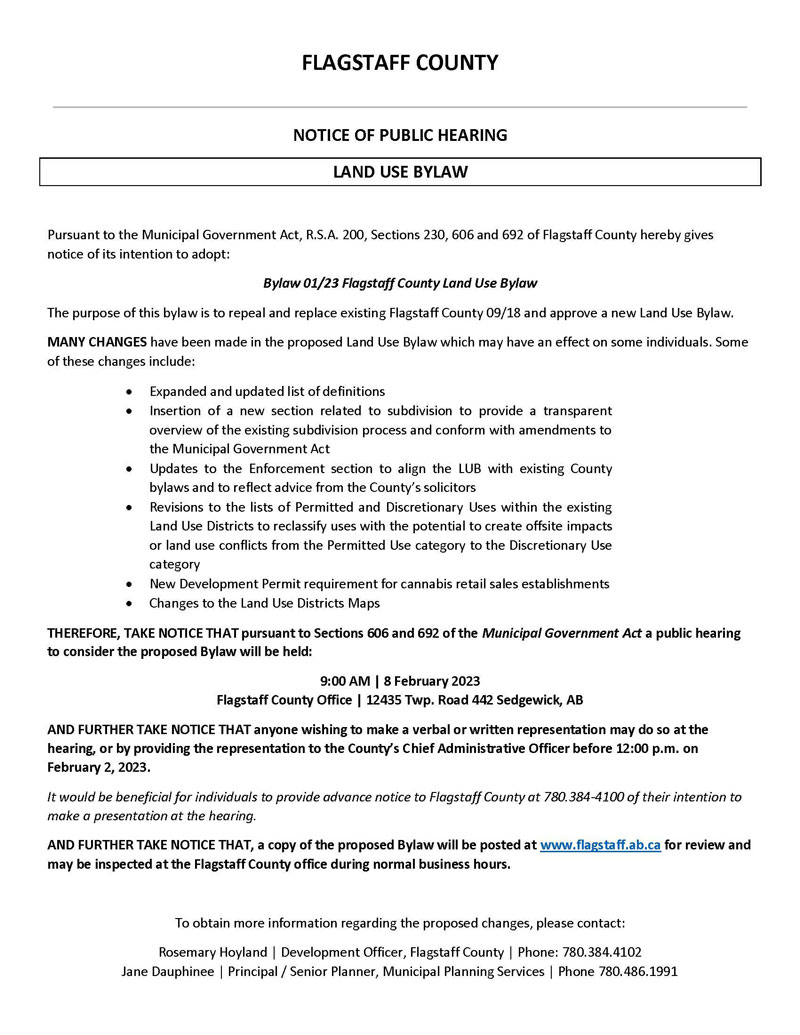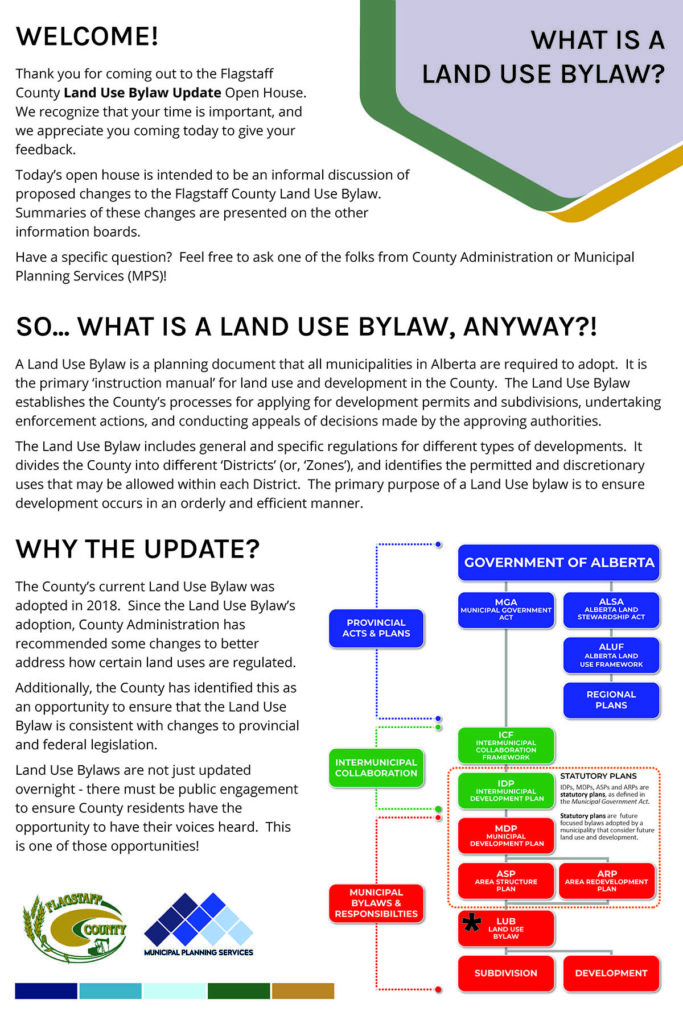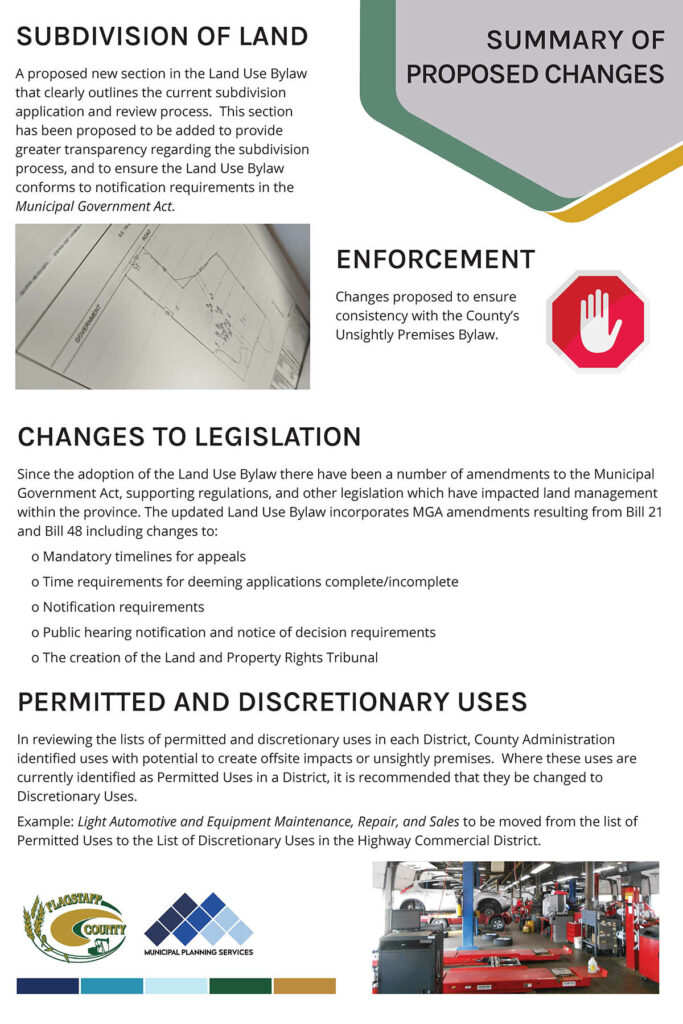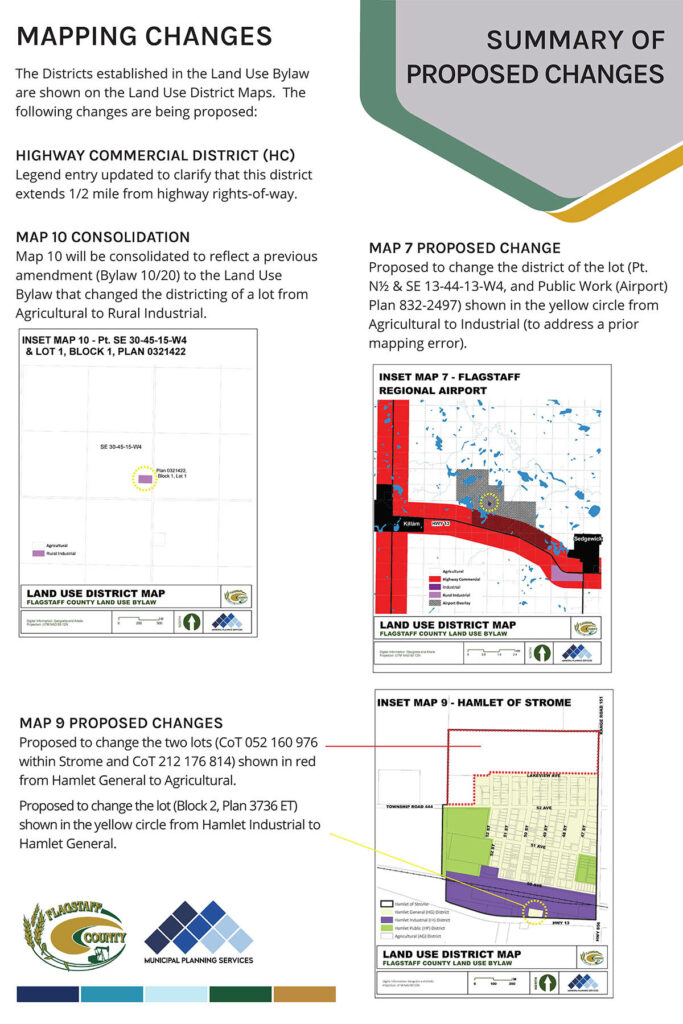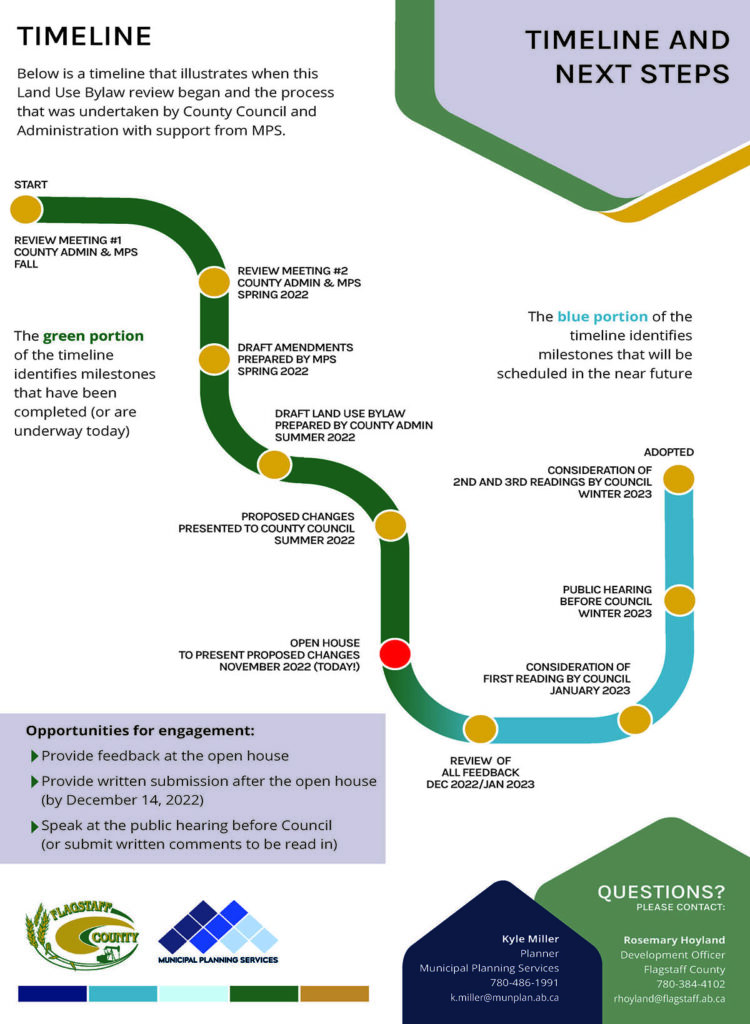Flagstaff County has updated our Land Use Bylaw (LUB).
A Land Use Bylaw is a planning document that all municipalities in Alberta are required to adopt. It is the primary ‘instruction manual’ for land use and development in the County. The County’s previous Land Use Bylaw was adopted in 2018 and was due for an update.
For a copy of our new Land Use Bylaw 01/23, click HERE. There is a Table of Contents at the front of the document that can assist in finding what you are looking for. If you require further assistance, please do not hesitate to call the Planning and Development Department at either 780-384-4102 or 780-384-4130.
Following is a response to questions and concerns that were expressed at the recent Public Hearing regarding Flagstaff County’s Land Use Bylaw 01/23.
Why are sea cans not allowed on agricultural parcels?
In the Agricultural District, a maximum of up to three sea cans is a permitted development, and four or more sea cans, is a discretionary use. Both can be applied for through the Development Permit process.
Please see Section 8.25 of our Land Use Bylaw for further information regarding sea cans.
Clarification on the definition for “excavation”
There is no requirement for a development permit for farming practices such as the cultivating of soil.
Enforcement and appeal processes are weak
Enforcement to remedy Land Use Bylaw contraventions, dangers and unsightly properties, are initiated when realized by Flagstaff County administration or by notification from the public.
Written submission of a concern or complaint must be received by the County to investigate the issue.
Depending on the issue, the County is empowered and directed by the Municipal Government Act to utilize the following enforcement tools:
- Flagstaff County’s Land Use Bylaw 01/23 – Section 5 Enforcement
- Flagstaff County’s Nuisance Bylaw 02/23
- Municipal Government Act – Sections 545, 546, or 645
Enforcement can be very arduous and may require legal assistance.
An Enforcement Order can be appealed to either Flagstaff County Council or the Subdivision and Development Appeal Board depending on which Section the Order was issued under.
Issues between neighbours
The County will address issues that are related to a Development Permit; however, it is not in the County’s jurisdiction to resolve other disputes between neighbours.
The Land Use Bylaw is too large of a document
There is a Table of Contents at the beginning of the document that can assist in locating a particular section of the Land Use Bylaw. There is also a “Guide to Using the Land Use Bylaw” on page vii of the Land Use Bylaw.
Alternatively, you can discuss your proposal or concern with Planning and Development staff. County staff are well trained and eager to assist you with your development, subdivision or general inquiry issues and to explain procedures. They can also assist with other situations such as enforcement or a Land Use Bylaw amendment.
What areas of the County are classed as “residential”?
Forming part of the “Interpretation” section of the Land Use Bylaw is “Districts” defined as follows:
- “Districts, residential” means the Hamlet General (HG) District for a residential use and the Multi-Lot Country Residential (MCR) District;
- “districts, agricultural” means the Agricultural (a) District and the Agricultural (AI) Small Holdings District;
- “districts, commercial” means the Highway Commercial (HC) District and sometimes the Hamlet General (HG) District (only if there is a commercial development on the parcel);
- “districts, industrial” means the Industrial (I) District, the Rural Industrial (RI District and the Hamlet Industrial (HI) District;
- “districts, institutional” means the Hamlet Public (HP) District.
Proposed height of 40 ft for a Wind Energy Conversion System, Micro
Development Permit approval is not required for a Wind Energy Conversion System, Micro. However, the development must still meet with the setback regulations of the Land Use Bylaw. If a tower taller than 40 ft. is proposed, development permit approval will be required.
The Development Authority has too many opportunities to apply discretion
The Municipal Government Act allows Council to delegate decision making power, and the Land Use Bylaw provides guidelines regulating how the Development Authority uses the discretion given to them by Council. The Land Use Bylaw provides clear regulations for development in the County and the Development Authority acts in accordance with regulations in the Land Use Bylaw. Discretion is typically exercised only when a subject site exhibits unique site characteristics.
The general rule of thumb is that every development must conform to the Land Use Bylaw, if there are going to be variances to the Land Use Bylaw, there should be some unusual circumstances to justify the variance.

